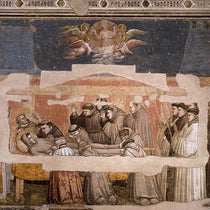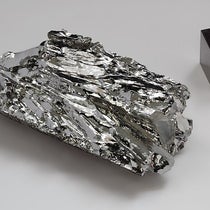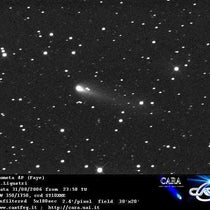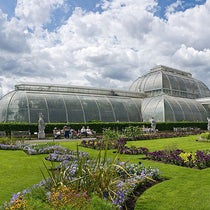Scientist of the Day - Francis of Assisi
Francis of Assisi, Saint, died on Oct. 3, 1226, at the age of perhaps 45. Born into a reasonably wealthy family, he lived a lavish, carefree youth, until he had a personal crisis, turned away from his family, gave away his possessions, and began a life of itinerant poverty. He attracted the favor of the Church, and in 1207 he informally founded a religious order, which was recognized by the Pope in 1210 as the Order of Friars Minor, OFM. It was a mendicant order, and members of the order, called Franciscans, took oaths of poverty and chastity and lived by begging as they preached. They lived quite a different life from the secular clergy, who owned property and preached in churches, and members of the monastic orders, who withdrew from the world into lives of contemplation. Franciscans wore brown homespun habits and were a very visible wing of the Church. Francis was canonized and named a saint shortly after his death, and a basilica was built in his honor at Assisi.
Although Francis never did anything remotely connected with science, we bring him into our ranks because several members of the Franciscan order did distinguish themselves as natural philosophers. As we did with the Dominicans two months ago, we wish to point them out, and ask why and how members of a mendicant order chose to study the ways of the natural world.
The scientific Franciscans probably took their lead from Robert Grosseteste, who was not a Franciscan, but who was lecturer to the Franciscan school at Oxford in the early 1230s. This was the time when Aristotle's writings, recently recovered, were being introduced into the university curriculum. Grosseteste was not only an Aristotelian and a Scholastic, he was also an original thinker, especially in his ideas about light, and he seems to have stimulated a generation of Oxonians, including a few Franciscans, as the Dominicans Thomas Aquinas and Albertus Magnus were to do shortly in Paris.
Probably the greatest Franciscan natural philosopher was Roger Bacon, who went through Oxford in the 1240s and seems to have absorbed Grosseteste's respect for Aristotle and natural philosophy, although it is doubtful that he knew Grosseteste personally. Bacon did not become a Franciscan until later in life, so he first engaged with the world unburdened by vows of poverty, and later, once he became a Franciscan, he did get in trouble with the order’s hierarchy because of his unhealthy interest in philosophy. But he never renounced his vows, and eventually he retired from teaching and withdrew to write books on the natural world and how it works. We will shortly write a post on Bacon and his contributions to natural philosophy.
Bartholomew the Englishman (Bartholomaeus anglicus) is more typical of a Franciscan scientist, in that he stayed away from philosophy, and chose to write an encyclopedia of the natural world. Bartholomew spent his early Franciscan years in Paris (we don't know anything about his English origins), and then was sent to Magdeburg in Germany in 1231, which is where, over the next 10 years, he compiled his encyclopedia. He compiled it the same way that Pliny compiled his back in the first century CE – he read every book available to him, and extracted facts and stories that he found interesting. Pliny's book was one of those he read, but there were several hundred others that he thoughtfully listed in his book, which gives us an excellent idea of what was available, and what was read, in 13th century Europe. Bartholomew called his book, De proprietatibus rerum (On the Properties of Things), and we have a lovely incunable edition of the book, printed in Nuremberg in 1483. It is missing the first few leaves, and it has no illustrations, but it does contain one beautiful illuminated initial, tooled with gold leaf, which we show you here. Someday we will do a post on Bartholomew as well, and give you some examples of what you might learn from his book. We just need to find an anniversary day.
A third Franciscan, important for the direction taken by medieval science, was Bonaventure. He was well educated in Aristotelian science at Paris and taught there for 20 years, until he became Director General of the Franciscan order in 1257. Like Bacon, he saw philosophy as an aid to theology, telling us things about the world that are missing from Scripture and the writings of the Church Fathers. But unlike Bacon, Bonaventure saw danger in certain unchristian aspects of pagan philosophy, especially when it implied the eternity of the world, or the mortality of the soul, and he encouraged Franciscans to be theologians first and philosophers second, and in moderation. Bonaventure did not mandate, but was probably happy with, the condemnations of 1277 at Paris that severely restricted the teaching of Aristotelian natural philosophy.
Another Franciscan philosopher of scientific note was William of Ockham, who lived a century after Bacon and Bonaventure. Ockham (sometimes Occam) ran into trouble with the reigning Pope because of his defense of the Rule of Saint Francis, which all previous popes had accepted, and Ockham had to live out his later life in exile at the court of the Holy Roman emperor, Louis IV. But he wrote a great deal, and made a strong case for nominalism – the belief that only individuals exist, and most higher categories are human constructs and exist only in the mind. Most famously, he introduced a principle of parsimony into natural science that maintained that the simpler explanation is the more likely one – that causal factors should not be multiplied unnecessarily. Ockham's razor (Occam’s razor) is as well known today, and as often wielded, as it was at the time of Ockham's death in 1347.
A final Franciscan scientist was Luca Pacioli, the great Renaissance mathematician of Milan who invented double-entry bookkeeping and befriended Leonardo da Vinci. Since we wrote a full post on Luca just three months ago, we will refer you to that post for further details.
But these four were about all I could find to justify a post on Franciscan science. That there were not more great Franciscan scientists should not be a surprise – the surprise is that a fellowship of mendicant priests produced any scientists at all. But we will note, as a final thought, that the Franciscans built some important churches, and some of them house great scientists, even if they were not Franciscans themselves. The most notable of these is the Basilica of Santa Croce in Florence, which is Franciscan, and contains within the tomb of Galileo Galilei (sixth image), not far from the tomb of Michelangelo.
William B. Ashworth, Jr., Consultant for the History of Science, Linda Hall Library and Associate Professor emeritus, Department of History, University of Missouri-Kansas City. Comments or corrections are welcome; please direct to ashworthw@umkc.edu.












